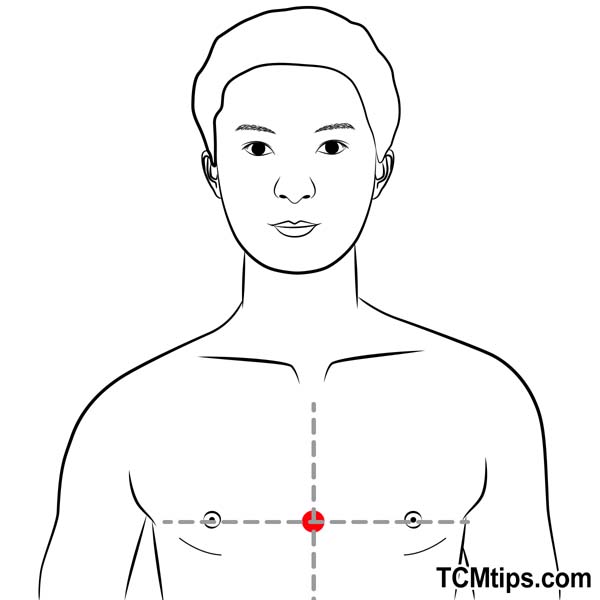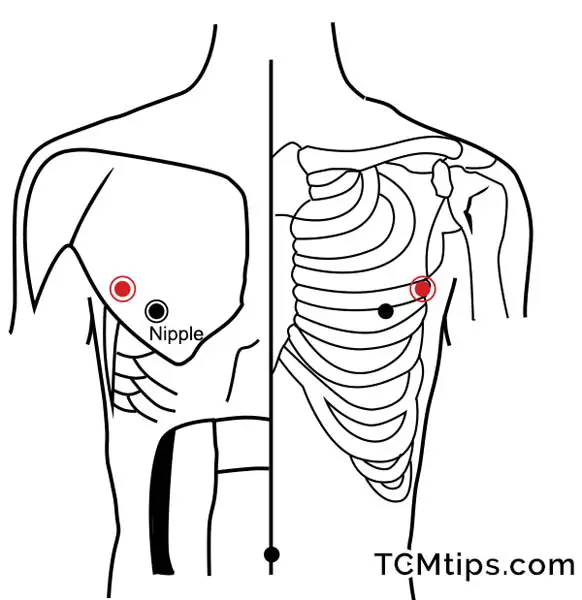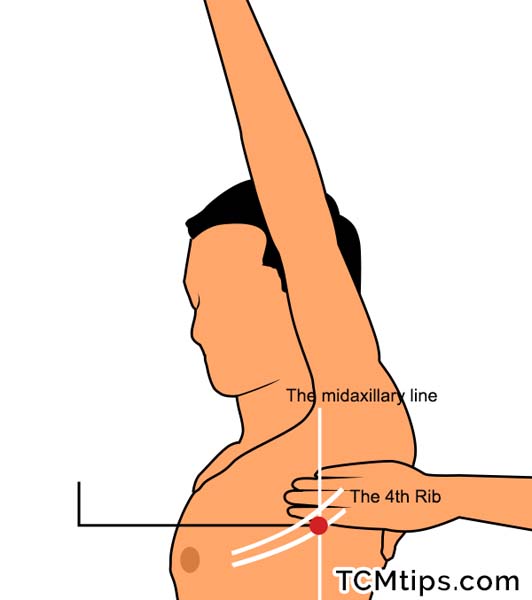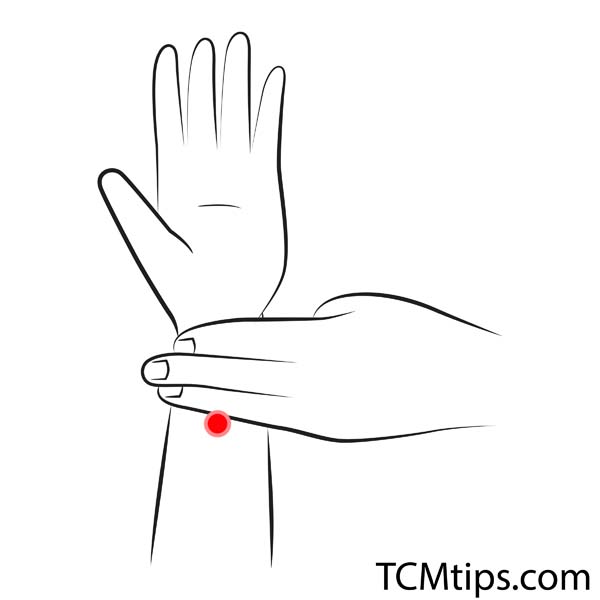There are many reasons why you might want to consider acupressure points for better breathing. You may be coping with asthma, bronchitis, or some other respiratory issue. COPD, or Chronic Obstructive Pulmonary Disorder, is a condition that progresses over time. However, studies have shown that acupuncture has been helpful in its treatment in conjunction with medication. On the other hand, you might just feel out of breath, like you can’t breathe, chest pain, or dizzy. These types of issues are mainly caused by impaired chest circulation, which can be caused by insufficient lung function, compression of ribs into lungs due to posture, as well as cold weather, air pollution, or other external factors.
Can Acupuncture Help Respiratory Problems?

Yes. A study that appeared in the Archives of Internal Medicine evaluated 68 people with COPD. Some received acupuncture in addition to their medication, while others received sham or placebo treatment. Those who received the acupuncture treatment along with their daily medication for three months were able to walk longer without becoming breathless compared to those who received the sham treatment.
Studies have found that individuals who receive acupuncture treatment in conjunction with their COPD medication are able to tolerate more exercise and reduce shortness of breath. Although not fully understood, acupuncture may help to relax muscles involved in breathing. It may be that acupuncture has been shown to release chemicals that dilate the airways, which then makes it easier to breathe. Acupuncture can be an important part of a comprehensive COPD treatment plan. And in conjunction with medication, can promote a healthier lifestyle by enabling individuals to exercise more without becoming breathless.
Using these acupressure points for breathing, you can accelerate the circulation within your chest and improve your breathing problems.
Do Acupuncture Increase Oxygen Levels?
Yes. A clinical trial investigated the effect of acupuncture on blood oxygen saturation in patients with obstructive sleep apnea-hypopnea syndrome (OSAHS) to evaluate the therapeutic effect of acupuncture on this disease. The study concluded that acupuncture alleviates anoxia, thereby producing an intervenient effect on OSAHS.
Can Acupuncture Cause Breathing Problems?

A case report documented two cases of pneumothorax caused by acupuncture within a three-month period. The report noted that a large German study published by Witt and colleagues included 2.2 million acupuncture sessions in 229,230 patients. The overall incidence of acupuncture-related adverse events was 8.6%, of which 2.2% required medical treatment. Included in those numbers are 35 patients who suffered breathing difficulties after acupuncture treatment, two of those being the cases of pneumothorax. These are, however, rare cases and should be considered in the wider context of its use.
The following list includes four acupressure points for better breathing that can help with a variety of different breathing issues. These can help with chest pain, lung function, shallow breathing, and even vital energy flow.
Acupoint: Ren-17 (Other Names: The Conception Vessel-17/Shan Zhong/Middle of the Chest)

Ren-17 is the first of the acupressure points for better breathing. It is located on the anterior median line of the chest at the level of the fourth intercostal space, at the midpoint between the two nipples. It is classified as the Front-Mu point of the Pericardium and converging point of qi. It is also an influential point of Qi, influential point of upper burner, a 4 Sea point, a Hui-Meeting point of Qi, a Point of Sea of Qi, and a meeting point of the Ren Mai, with the Spleen, Kidney, Liver, Small Intestine, and triple Burner channels.
It is a useful acupressure point for asthma. Additionally, it can be used for pain and oppression of the chest, cardiac pain, palpitations, insufficient lactation, hiccups, and dysphagia. It functions by opening the chest, tonifying and regulating lung Qi, subduing rebellious lung Qi, and benefitting the breasts. It regulates Qi, downbears counterflow Qi of Lung and Stomach, unbinds the Chest, disinhibits the Diaphragm, reinforces gathering Qi function, and benefits the breasts, and promotes lactation.
Front Mu points are useful in treating diseases that affect the Zang-Fu organ, the Yang meridians, and its collaterals.
Acupoint: SP-18 (Other Names: Spleen-18/Tian Xi/Celestial Cleft)

SP-18, or Spleen-18, is the second of the acupressure points for better breathing and is located on the lateral aspect of the chest, in the fourth intercostal space, 6 cun from the anterior midline of the body. It is useful in the treatment of pain in the chest and hypochondrium, cough, acute mastitis, and insufficient lactation. It functions by regulating and descending Qi, and promoting lactation.

Acupoint: GB-22 (Other Names: Gallbladder-22/Yuan Ye/Armpit Abyss)

GB-22, or Gallbladder-22, is the third acupressure point for better breathing and is located on the lateral side of the chest. When the arm is raised, it is located on the mid-axillary line, 3 cun below the axilla in the fourth intercostal space. It is useful in treating chest congestion, pain in the hypochondrium, and spasms and pain in the upper extremities. It functions by opening the chest and relaxing the sinews.
Acupoint: PC-6 (Other Names: Pericardium-6/Nei Guan/Inner Pass)

PC-6, or Pericardium-6, is the last acupressure point for better breathing and is located on the palmar aspect of the forearm, 2 cun above the transverse crease of the wrist, on the line connecting PC-3 and PC-7, between the tendons of the palmaris longus and flexor carpi radialis muscles. It is classified as a Luo-Connecting point of the Pericardium meridian and a master point of the Yin Wei Vessel when combined with SP-4. It is useful as an acupressure point for thyroid. It can also be used for chest congestion, pain in the hypochondrium, cardiac pain, palpitations, epilepsy, hiccups, vomiting, depression, dizziness, vertigo, apoplexy, hemiplegia, spasm, and pain of the upper extremities, cough, asthma, irritability, and malaria. It functions by opening the chest, regulating Heart Qi, calming the Shen, harmonizing the stomach, relieving nausea and vomiting, and regulating Qi.
PC-6 is helpful in treating insomnia and is the main point to use for nausea and vomiting. It can be used for any condition related to the chest. Luo-Connecting points of a meridian can communicate with two meridians, treating diseases of the collaterals and can be used to treat chronic diseases, especially those of the Zang-Fu organs. Luo-Connecting points, when combined with Yuan-Source points, are useful in the treatments of diseases.

Try our Anti-Aging Gua Sha Tool designed to bring out your skin’s natural glow.
Best Gua Sha Product- Anti-Aging: The tool is designed to target 11 specific aging signs such as wrinkles and sagging skin. By following the 7-step routine, users can improve skin firmness and reduce fine lines naturally.
- Enhances Skincare Routine: It works effectively with serums and lotions, boosting absorption and efficacy of skincare products.
- Visible Skin Improvement: Users can expect a smoother complexion, reduced puffiness, and a more youthful appearance.
 P. Sze
P. Sze 

















